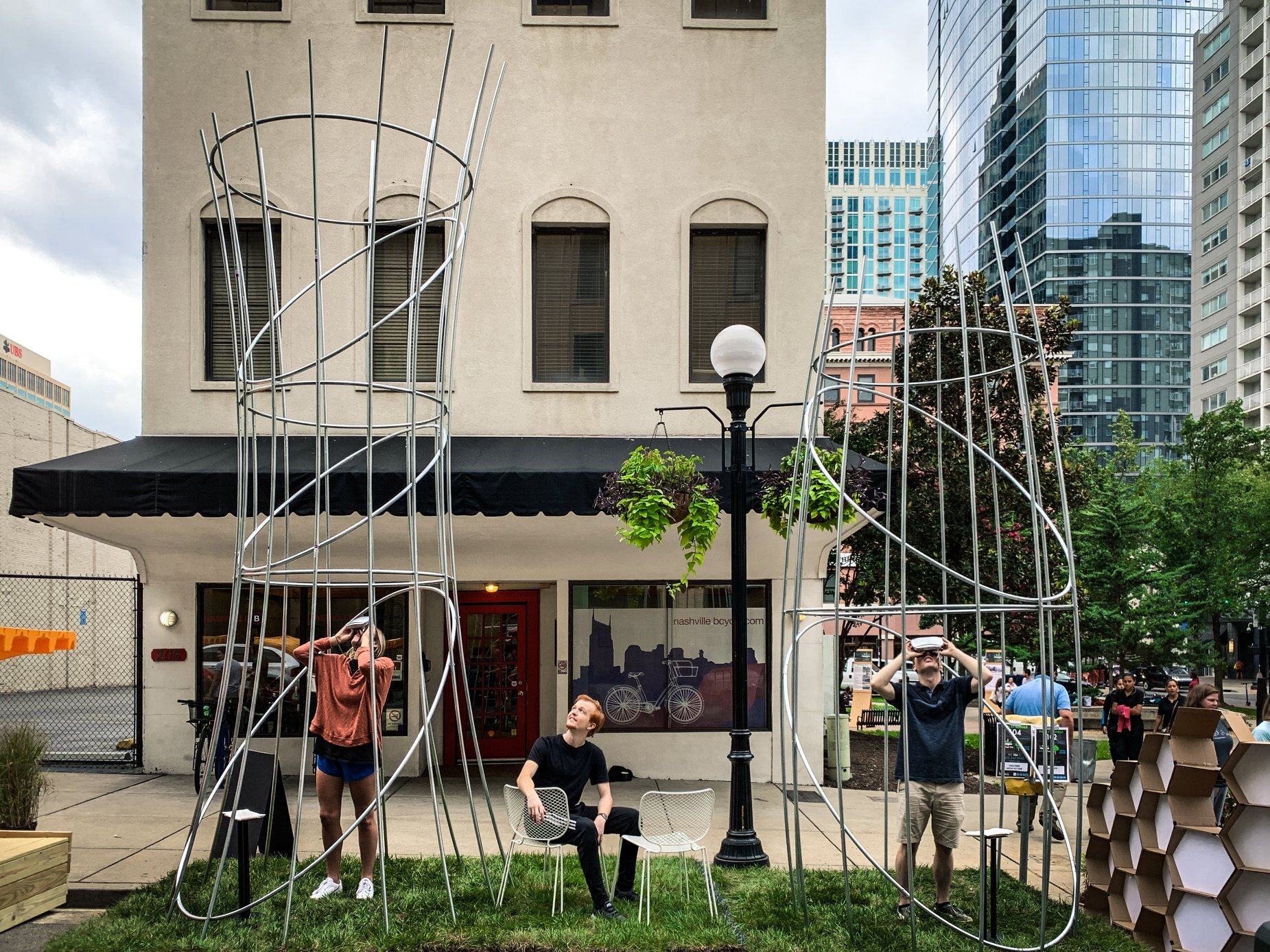Parklets: Then and Now
By Joey Ling, Design Studio Intern
4 min read As we progress through the year, the world is slowly, but surely, starting to open back up. While the coronavirus pandemic did not fully stop PARK(ing) Day in 2020, things looked a bit different due to social distancing restrictions. The pandemic has forced us to rethink how space and the humans interact with each other. How can such a tiny space be COVID safe? Could businesses use this as a effective way to allow safe dining while people are still uncomfortable eating indoors?
One of Hawkers Partners Inc. digital visualizations from PARK(ing) Day 2020. This location was specifically Downtown, Broadway.
What is a parklet?
PARK(ing) Day 2019 - HASTINGS
A parklet, by definition, is a sidewalk extension that provides more space and amenities for people using the street. However, the term is generally used to describe the process of converting metered parking spaces in urban spaces into spaces for pedestrians whether it be seating or small parks.
Parklet may transcend typical programing of seating or shade by also providing physical activity, games, or changes in perspective, and more. While these spaces seem small for a park, they spur us to rethink and consider the limited urban space that is available.
What is PARK(ing) Day and How did it start?
Originating in San Francisco in 2006, parklets have traveled to Mexico, United Kingdom, and even to Australia. Parklets have spread on a global scale, resulting in an annual event that occurs in September, known as PARK(ing) Day. The story begins with REBAR Studio, who simply fed coins into a parking meter one day—adding a layer of turf, a bench, and one potted plant to create a temporary space for pedestrians to rest. The next year, the whole city of San Francisco got involved in transforming parking spaces into interactive pedestrian areas. This was the birth of PARK(ing) Day.
The movement quickly reached Nashville in 2012 beginning in the downtown core and eventually stretching well outside of the original boundaries to occupy many more neighborhoods.
Located in Stockholm, Sweden. Created by Studio Landscape & Urban Planning Studio and Tengbom.
How has the pandemic affected parklets?
During the time of the pandemic, parklets were encouraged so businesses could participate in social distancing with outdoor dining solutions. As an added benefit, the parklets also provided placemaking for different corridors within the city districts. This allowed more exposure for the parklet movement—getting various communities, businesses, organizations, and schools involved beyond PARK(ing) Day.
Parklet rendering by Design Fellow, Remi Lynch.
Nashville’s PARKLET SEASON
The Civic Design Center spearheaded the effort to start the movement of PARK(ing) Day in Nashville in 2012. A whole season from July to the end of the September would eventually be dedicated to PARK(ing) Day and public space advocacy.
sKYLINE sOCIAL
Usually in July, this pre-cursor event is to gather and create discussions around Parklets. Announcements are made on a theme or what the specialized focus is that current year. People and organizations come to socialize and collaborate on their potential designs for PARK(ing) Day.
park(ing) Day
On the third Friday of September annually, PARK(ing) Day takes center stage. Traveling to their chosen space, everyone builds their design in the limited space provided for just one day only. While these installations are usually temporary, some organizations and businesses recently applied for long-term parklet permits. Each year, there are PARK(ing) Day judges who score every parklet in various categories, like sustainability, creativity, and more.
Golden Cone Awards
Following PARK(ing) Day, everyone gathers to celebrate their designs. Golden Cone Awards are given to teams and organizations whose designs are chosen based on the different judging categories in addition to the People’s Choice.
Follow below to explore the story map to gain insight on when and where the “parklet” started and how Nashville and the Civic Design Center joined the movement.
Are you ready to join PARK(ing) Day 2021?Interested in learning more about Parklets and PARK(ing) Day?
Read the Original PARK(ing) Day Manual by Rebar Studio





